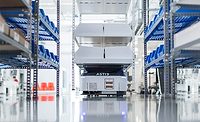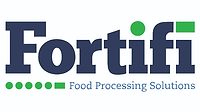Software/Devices
ABB Robotics Launches Software Platform

Image courtesy of ABB Robotics
ABB Robotics released its new modular OptiFact software platform, which is designed to streamline data collection, visualization, and analysis in automated production facilities. The company says its platform enables users to collect, manage and analyze data from hundreds of factory devices, including ABB robots, to determine performance indicators including cycle time and overall equipment efficiency (OEE). By speeding up diagnostics and decision making, OptiFact reportedly increases the production line uptime with less engineering effort, ensuring production can keep pace with customer demand.
“Across industries, we see a dramatic increase in the digitalization of manufacturing as companies seek to increase the flexibility, efficiency, and sustainability of their operations in the face of changing consumer behaviors and long-term global skilled labor shortages,” says Marc Segura, president of ABB Robotics. “At ABB Robotics, we are enabling this shift with software products that businesses need to accelerate their growth in today’s fast-changing market.”
With OptiFact, ABB Robotics says factory operators can determine the root cause of production errors and use ABB’s RobotStudio Cloud to make adjustments to the program and develop an improved robotic solution.
RobotStudio’s desktop, cloud, and AR viewer solutions aim to help users plan and imagine new deployments of ABB industrial robots or adapt existing ones to new production tasks. Its features such as Automatic Path Planning allow robots to determine efficient paths and avoid collisions with existing obstacles. RobotStudio reportedly speeds design and commissioning time by up to 50%.
According to ABB Robotics, OptiFact has been deployed in production facilities, including an automated automotive production environment, where it collects and analyzes production process cycle times and other performance indicators, providing visibility into factory operations and saving up to 25% of experts’ time. As a result, the customer has added the deployment of over 580 robots in its operations.
The company says that an additional pilot demonstrated the platform’s ability to identify production bottlenecks in production lines involving up to 20 robots. The customer’s digital team integrated OptiFact into its production environment in two months from first contact to final delivery. Once deployed, OptiFact simplified data collection and the visualization of performance indicators such as cycle time and Programmable Logic Controller (PLC) alarms. By addressing operational inefficiencies detected using OptiFact, the facility increased production time by up to 20%.
Looking for a reprint of this article?
From high-res PDFs to custom plaques, order your copy today!





